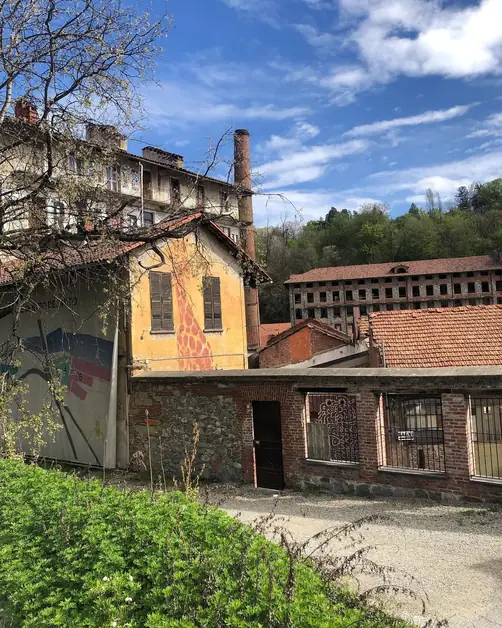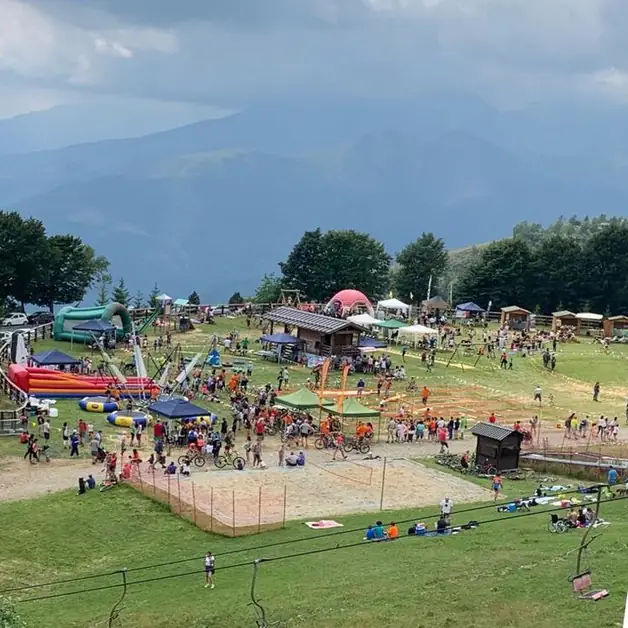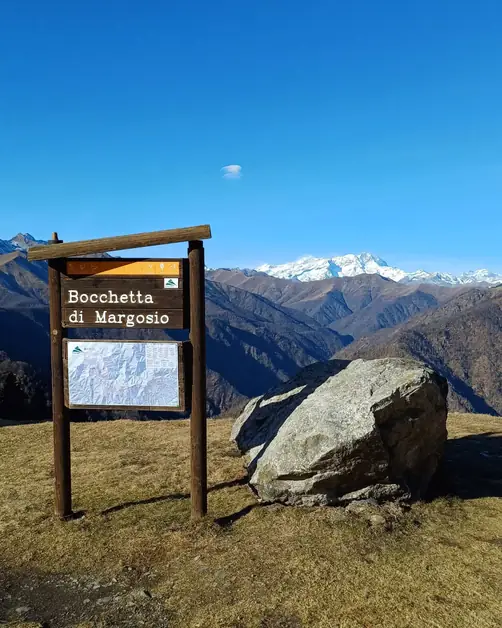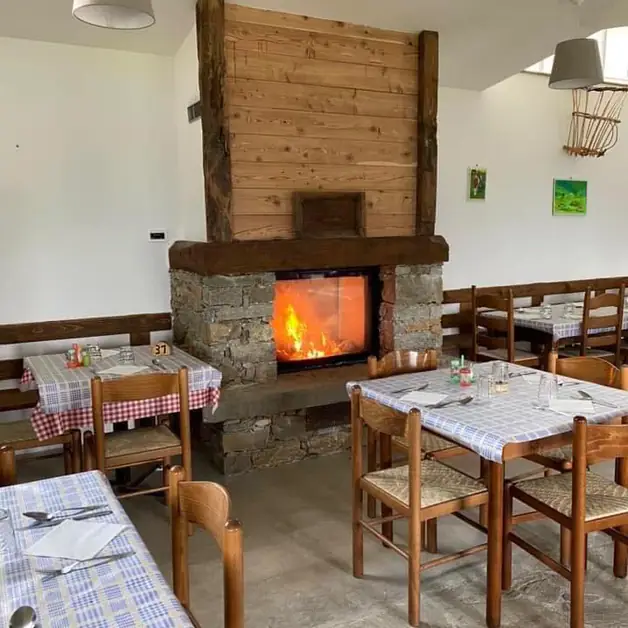Cittadellarte the cultural heart of Biella
Cittadellarte is a cultural center transforming Biella.

What is Cittadellarte and where is it located?
Cittadellarte – Fondazione Pistoletto is located in Biella, at Via Serralunga 27, within the premises of the former Lanificio Trombetta, a decommissioned factory that represents an important testimony of industrial archaeology. This building, situated in the heart of the historic Biella textile district, has been completely restored and transformed into a center dedicated to art, culture, and social innovation.
The complex overlooks a large central courtyard, around which the three exhibition floors of the historic wool mill develop. Here, past and future merge, in a balance between industrial memory and contemporary creativity.
What is the history of Lanificio Trombetta?
Lanificio Trombetta was one of the symbols of industrial Biella between the 19th and 20th centuries. Like many other wool mills in the area, it contributed to the economic and social growth of the city, thanks to the production of high-quality fabrics exported worldwide.
With the crisis in the textile sector and the gradual decommissioning of the plants, the building risked falling into abandonment. But in the 1990s, thanks to the intervention of artist Michelangelo Pistoletto, the wool mill was reborn as a place of cultural and artistic regeneration.
From a material production facility, the complex became a factory of ideas, where art, society, and sustainability intertwine to generate a new model of urban and human development.
Who is Michelangelo Pistoletto and what role does he play in Cittadellarte?
Michelangelo Pistoletto is one of the greatest contemporary Italian artists, a central figure of Arte Povera, and known worldwide for his reflective works and his social commitment through art.
In the 1990s, Pistoletto decided to found Cittadellarte, an innovative project that unites art and society, with the aim of transforming creativity into a tool for responsible change.
Through the Pistoletto Foundation, the artist wanted to give new life to Lanificio Trombetta, transforming it into a permanent laboratory where artists, researchers, architects, and entrepreneurs can collaborate to envision a more sustainable and conscious future.
What does Cittadellarte represent for the city of Biella?
Cittadellarte is much more than a museum or exhibition space: it is a factory of contemporary culture. Its birth has had a decisive impact on the urban restructuring of Biella, contributing to the regeneration of an entire urban area and transforming a decommissioned industrial site into a creative and cultural hub of international significance.
Today, Cittadellarte is considered a reference point for dialogue between art, economy, politics, education, and spirituality, promoting a sustainable development model that involves local communities and global realities.
It is also a glocal space, capable of connecting the Biella area with the world through collaborations, exhibitions, events, and training programs open to an international audience.
How is Cittadellarte organized?
The former wool mill houses three exhibition floors overlooking the internal courtyard, the true beating heart of the structure. The environments maintain the original industrial atmosphere, with large windows, metal beams, and wooden floors, which dialogue with contemporary installations.
In addition to the rooms dedicated to Pistoletto's works, Cittadellarte includes shared workspaces, laboratories, conference rooms, studios for resident artists, and areas dedicated to research and training.
Each floor tells a different aspect of the project: from the history of the place to the artistic vision, to initiatives that link creativity and sustainability.
What works and projects can be visited?
Cittadellarte hosts a permanent collection of the most significant works by Michelangelo Pistoletto, including the famous "Reflective Works" and symbolic installations such as the Third Paradise, emblematic of his thought on the fusion between nature and artifice.
Alongside the permanent exhibitions, temporary exhibitions, performances, conferences, and workshops involving artists and researchers from around the world are regularly held.
One of the most well-known spaces is the Gallery of the Third Paradise, which represents the idea of a new harmony between man, nature, and technology.
What does "Cittadellarte" mean?
The name "Cittadellarte" encapsulates two concepts: "citadel" and "art." It indicates a protected but open place in the world, a laboratory where art becomes active citizenship, capable of inspiring responsible behaviors and concrete projects.
The goal is to integrate art into society, overcoming the traditional view of the artist as an isolated individual. Here, art is a means to connect people, disciplines, and different cultures.
What activities take place today at Cittadellarte?
In addition to exhibitions, the Pistoletto Foundation promotes a wide range of interdisciplinary activities:
* Educational projects aimed at schools and universities. * Residency programs for artists and creatives. * Cultural and musical events in the courtyard and exhibition spaces. * Workshops and meetings dedicated to sustainability, ethical fashion, and social innovation.
Cittadellarte is also home to UNIDEE (University of Ideas), an international artistic training program that combines art, science, and civic engagement.
What is the link between Cittadellarte and the Biella area?
Biella is a city that has always had a strong connection with textile manufacturing and the culture of work. Cittadellarte has been able to enhance this heritage, transforming it into a new form of creativity.
Today, the center collaborates with local businesses, institutions, and associations to promote a culture of sustainability that combines technological innovation with respect for the environment and people.
The recovery of the former Lanificio Trombetta has become a model for other urban regeneration projects in Italy and Europe, demonstrating how industrial sites can be reborn as spaces for culture and dialogue.
How to visit Cittadellarte?
Cittadellarte is open to the public year-round. Visits can be free or guided, with paths that include exhibition spaces, permanent installations, and the central courtyard.
The entrance is located at Via Serralunga 27, Biella, and the complex is easily reachable from the city center or the train station. Special events, visits for school groups, and interactive workshops are also available.
Visiting Cittadellarte means discovering a place of transformation, where art meets everyday life and where Biella's industrial past becomes the engine of a new collective creativity.


